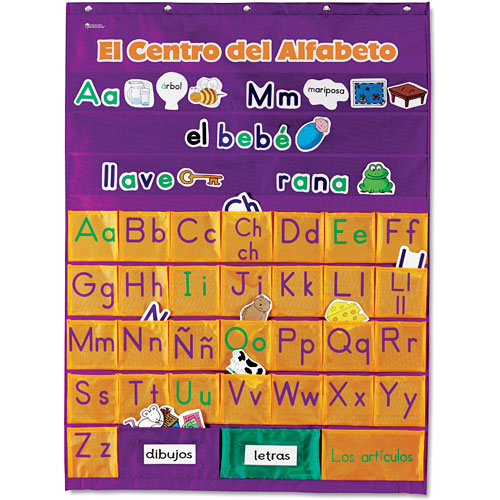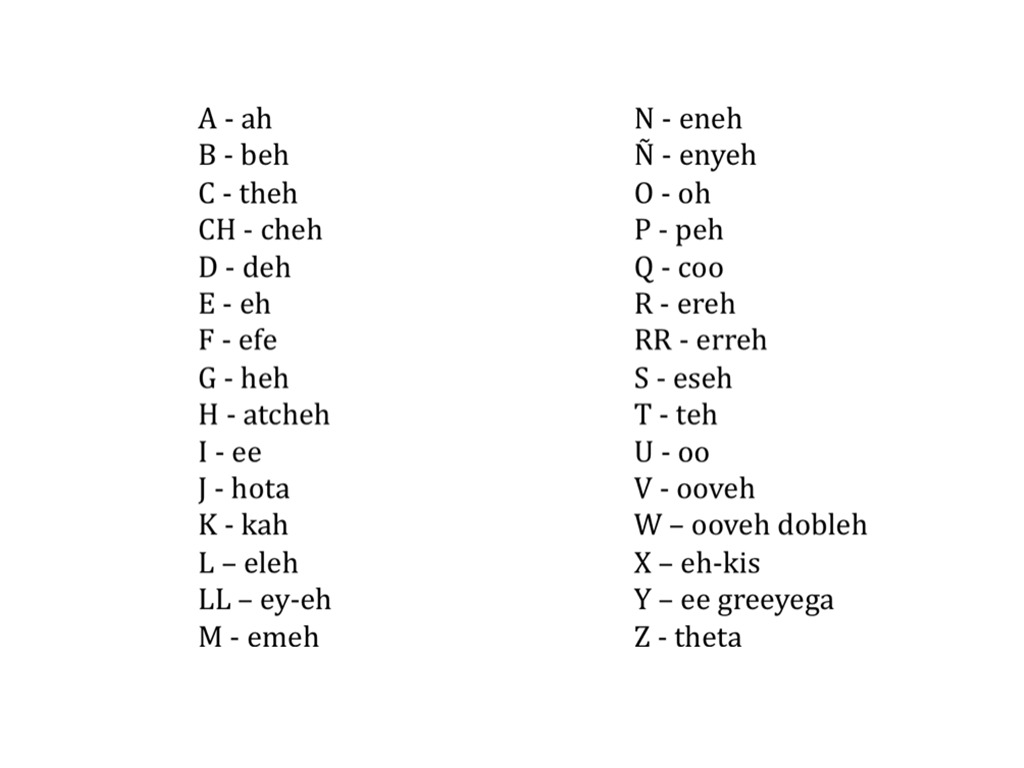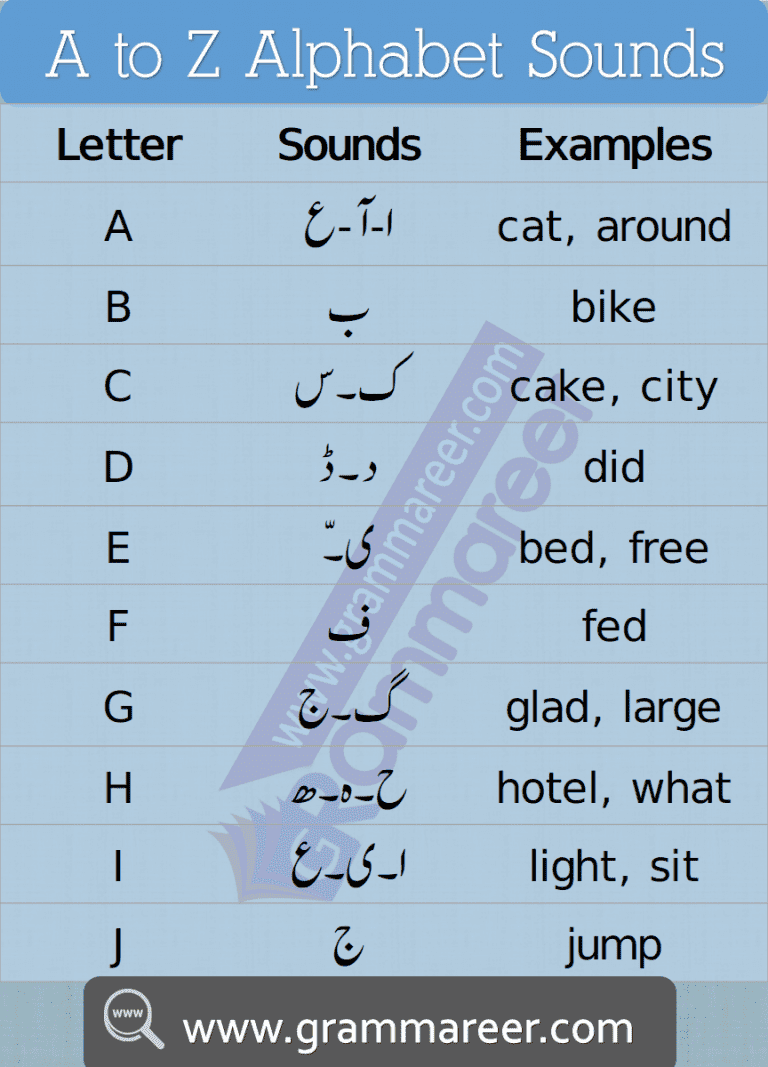You may have seen vowels with accent marks (á, é, í, ó, ú). However, these are not considered distinct letters in the alphabet either. Spanish accents are called "tildes" and they can only be placed above vowels. When you see a vowel with a "tilde," it means that the vowel is stressed in the word. This is something you need to look out for to achieve proper pronunciation.
There are, of course, grammar rules for the use of accent marks, which you will see further along your language learning journey. The letter d basically sounds like an English d but is a bit softer in Spanish. At the end of a word, it is not stressed as it is in English.
Say the word "paid" out loud and hear the strength of the d at the end. In Spanish, any d at the end of the word is barely pronounced. Say ciudad without the d at the end and you'll sound like a native.
Remember, the lack of double consonants makes spelling easy. Learning the consonants of the Spanish alphabet is a basic step to reading and speaking the language. The pronunciation and sometimes names of some of the consonants may vary from one country to another, e.g. "V" and "Y" . Know that the letter "Z" has a different pronunciation in Spain compared to Latin America, where it sounds very similar to "S" – almost the same actually. Another interesting fact is that the letter "R" in Spanish has both a weak and strong pronunciation, something that you learn to recognize with practice, e.g. It is also very important to remember that the letter "H" is silent, which means that even if the word has an "H" somewhere you should not pronounce it at all.
Please check the examples with the Spanish alphabet above again and see how these rules were applied. In the Spanish alphabet, the letter "s" represents the sound of a deaf consonant with two varieties in pronunciation. One is produced by placing the apex of the tongue almost supported on the socket, giving way to the air that comes out rubbing and without vibrating the vocal cords. The letter "s" can be found in words like "siesta" or "serpiente" ("snake"), but also receives the phonetic value of /z/ when there is lisping due to dialectical reasons, especially in southern areas.
Since the sixteenth century, this letter of the Spanish alphabet represents two different sounds. The first is the one in "cama" ("bed"), "copa" ("cup") or "cuna" ("crib"). It is produced by approaching the back of the tongue to the veil of the palate and letting the air out through a small implosion, without vibrating the vocal cords. This sound is what the letter "c" has before the vowels "a", "o", "u"; before consonants "l" and "r"; and when it carries a consonant behind, as in the word "pacto" ("pacto"). Pronouncing Spanish based on the written word is much simpler than pronouncing English based on written English.
This is because, with few exceptions, each letter in the Spanish alphabet represents a single sound, and even when there are many possible sounds, simple rules tell us which is the correct one. In contrast, many letters and letter combinations in English represent multiple sounds (such as the ou and gh in words like cough, rough, through, though, plough, etc.). A word with preantepenultimate stress or earlier does not have a common linguistic term in English, but in Spanish receives the name sobresdrújula. Stress in Spanish is marked unequivocally through a series of orthographic rules. Words that do not follow the default stress have an acute accent over the stressed vowel. The written accent may thus appear only in certain forms of a word and not others, for example andén, plural andenes.
In many cases, the accent is essential to understanding what a word means, for example hablo ('I speak') as opposed to habló ('he/she/you spoke'). Unlike other languages, each letter of the Spanish alphabet represents just one sound . Therefore, once you learn how to pronounce each letter, you will be able to read any word in Spanish. In English, instances of a double bb, nn, ss, ff, and so forth, are common. Spanish, on the other hand, does not have many words with double consonants of the same consonant letter. You can find exceptions to this rule, however, with words containing ll, rr, cc, and nn; for example, diccionario, carro, connotación, and llave.
Only the single letter f is used to make the f sound in Spanish. As we see above, the alphabet is also very similar to English, hence, especially for English speakers, it is easy to overcome the pronunciation of Spanish words. Once you know how a letter is pronounced, you can pronounce almost every word with confidence. You need to pay special attention to only some of the letters.
I would like to take this opportunity to address particular concerns when teaching Spanish pronunciation to English speaking students. In English, the alphabet is taught with the hard sounds A, E, I, O, U. Keep in mind that these five letters can produce any of twelve different vowel sounds. Spanish is VERY different, the letters "a, e, i, o, u" always have the sounds . Students must be taught that the five Spanish vowels are always the same, if not, they will naturally assume that the Spanish vowels can be pronounced in a variety of ways. Yes, I agree, it is useful to pronounce diphthongs naturally.
Specifically, if a student says a word in 3 syllables when it is commonly pronounced with 2, but the student gets the vowels correct, every Spanish native will understand exactly what they are saying. But, if the student gets a vowel wrong, natives may not understand. Of note, Spanish does have some characteristics that can make proper pronunciation of some Spanish words a bit challenging for new learners. As one example, the letter r is pronounced differently and takes some practice for most new learners. This distinct sound is formed by tapping the tip of the tongue on the roof of the mouth, about a third of the way back in the mouth. Some Spanish language experts counsel new Spanish learners to practice making the "tt" sound, as it sounds in the English word butter.
The usual /z/ sound appears in words like "zafiro" ("sapphire") and "feliz" ("happy"). Its sound is produced by supporting the tip of the tongue between the teeth, allowing air through them and without vibrating the vocal cords. There is another variety of sound that places the tongue on the hard palate sounds like the /s/. This pronunciation is very common in Andalusia, the Canary Islands and most Spanish-speaking countries in America. This letter of the Spanish alphabet represents two sounds. The first, before "a", "o", and "u", is produced by contacting the back of the tongue with the soft palate, producing a small explosion of air with the vocal cords vibrating.
It is also pronounced that way when it carries a consonant behind, as in "gracias" ("thanks"). Since we all speak our native languages without thinking about the movements in our mouth, you probably can't feel what direction your tongue is moving when you speak. That's why the first steps to improving spanish pronunciation is developing an awareness and control over your tongue's movement. There are 27 scripted letters in the modern Spanish alphabet. But there are at least 39 phonetic sounds in modern Spanish speech.
It is important to understand that even though English and Spanish have almost identical alphabets, the same characters do not always represent the same sound in both languages. Spanish pronunciation is about the speech itself, which you'll end up speaking if you want to truly learn the language. This letter sounds much like an English d, except you should place your tongue against your upper teeth instead of the roof of your mouth when pronouncing it. It often sounds like the th in English then, especially when it comes between two vowels. English-speakers have a tendency to add an additional vowel to the end of the vowel sounds and in Spanish. One must pronounce a single, clear vowel, and avoid attaching a second vowel sound to create a new vowel sequence or .
When a second vowel is added in Spanish, it creates an extremely "foreign" accent and can it can even change the meaning of the word you are attempting to say. These "artificial" diphthongs may seem like a small issue, but it is very important to produce the correct sound if you wish to avoid miscommunication. Some of the more common regional differences are noted as well, so you can understand the various dialects better when you hear them. In Spanish, the letter "c" is combined with the letter "h" to form the digraph "ch", which was previously considered a single letter within the Spanish alphabet. It represents the sound produced by the contact of the edges of the tongue with those of the palate, joining first and then separating. The air passes through that barrier, rubbing and exploding, the veil of the palate closes, and the vocal cords do not vibrate.
This sign is that of words like "chocolate" ("chocolate"), "corcho" ("cork"), and "Chile". The fastest way to learn the Spanish alphabet is to know what each letter actually sounds like and more than anything, what each letter sounds like to an English-speakers. For instance the letter 'i' in Spanish sounds exactly like the letter 'e' in English, a simple fact that can help anyone remember how to say 'i' in Spanish.
By using this kind of comparative English/Spanish approach we've had great success in our Fluenz language learning programs. To learn how to pronounce each letter of the Spanish alphabet, it is always useful to visit a website where all the letters of the Spanish alphabet pronounceone by one and clearly. The below chart tells you how to pronounce letters in Spanish. As you'll learn, not only can a letter like 'a' sound a bit different, letters like 'j', 'h', 'e', and 'i' are completely different from English to Spanish.
And then there are the double letter sounds, such as the well-known 'rr' and 'll', but also the lesser-known sounds, 'ga', 'ge', 'gi', 'go', & 'gü'. Most Spanish pronunciation guides are really only about pronunciation rules for the language. They tend to fall short of teaching you how to actually hear and pronounce said sounds. Here at The Mimic Method, we think this latter part is even more important than just recognizing the location of a sound in word spelling.
Now that we know the letter names, let us focus on how to pronounce each letter alone and in combination with others. This is an essential step when learning any language in order to acquire good pronunciation habits. The Spanish language is quite easy to pronounce, as we mentioned before, the abecedario contains five vowels or vocales. Another letter in Spanish that looks like a double letter is the rr. This letter is intended to elicit the rolling sound that is difficult for many who are learning Spanish as a second language. You should roll your tongue when you see the letter rr within a word, or when a single r is the first letter of a word.
There are some important exceptions to the "no double letter" rule. A single l sounds like the letter l you hear in English words. In addition to the 26 letters of the English alphabet, Spanish also had the "CH", "LL", "RR" and the "Ñ".
But, several years ago three of those letters were eliminated as separate letters and only the "Ñ" remains, making a total of 27 letters. Many Spanish-English diction- aries still have the old letters in their listings. Therefore, to look up words like chico or llegar one would have to go to the "CH" or "LL" sections in the dictionary. Each letter has a name to identify it when we say the alphabet or spell a word.
Pronouncing Spanish letters and words often requires you to open your mouth more than you do in English and to curve the corners of your mouth slightly upward. With some exceptions , each consonant also represents one sound. Many consonants sound very similar to their English counterparts. English letters are not given names and neither are Spanish letters. However, when you say the letter it has a pronunciation all its own that could be thought of as its name. The following is the Spanish alphabet with a pronunciation guide.
Remember, this is not a phonetic pronunciation, even though some of the English letters will have a similar sound. And of course, you need to take into account the Spanish accent. The use of accent marks in printing varies by period, due to reforms successively promulgated by the Spanish Royal Academy.
For example, many of the words that are today standardly written with an accent mark appeared more often without it up until around 1880. The accent-marked infinitives such as oír, reír, sonreír began to outnumber the unaccented form around 1920, dropped the accent mark again in 1952, and regained it in 1959. Monosyllabic preterit verb forms such as dio and fue were written with accent marks before the 1952. It is derived from a Roman character of the same name, which was taken from the Greek letter "tau".
It comes from "taw", the last letter of the Phoenician alphabet, and represents a cross, which, in turn, has its origin in an Egyptian hieroglyph. It represents the sound that is produced when the air passes through the tip of the tongue, which is supported on the inside of the teeth, while the vocal cords remain inactive, as in "toro" ("bull"). Depending on its position within a word, you can make your tongue vibrate once or twice. For example, it vibrates less in "caro" ("expensive") than in "ropa" ("clothing"). Besides, depending on the country, there are different pronunciation rules for this letter. For example, in Cuba and the Dominican Republic it is often pronounced as a "l".
Find equivalent signs in the Greek, Hebrew and Arabic alphabets, among others. His name is "be", and the Phoenicians shaped it from the representation of the crane in the Egyptian hieroglyphs. The majority of the letters in Spanish have their own special names and people use them all the time when spelling out words. Below you'll find all 27 letters of the 'abecedario' and their names, along with an example word for each and the pronunciation using English sounds. Accent marks in Spanish are simply instructions on how to pronounce a word. Syllables are marked with an accent to let the reader know to stress that syllable.
Try reading these examples aloud and paying attention to the stressed syllable. The letter rr can also be challenging for English speakers since this "rolling R" sound doesn't exist in English! To pronounce this Spanish trill, you quickly touch the tip of your tongue to your hard palate multiple times while blowing air out of your mouth. As mentioned, the 'd' between vowels carries a different phonetic value, equivalent to the english 'th,' as in 'then.' However, this ALSO occurs with b/v and g. In the sentence you have, you are actually missing the "hard g" sound, which would occur at the beginning of a word or after a nasal . I humbly suggest that we say that this cigüena is "una cigüena guapa," as that would cover all of the sounds in Spanish.
The letter ñrepresents a nasal palatal phoneme, which is a sound that does not exist in English. It is commonly said that ñ is pronounced like n in "canyon" or in "onion". Unfortunately, that is just a useful approximation, at best. Actually, you could think of the ñ as a new variety of n. It is not like n in "son", because you don't use the tip of your tongue. It is not like n in "song" either, because you also do not use the back of your tongue.
Ñ is a sort of middle term between those, that is, you should press the roof of your mouth withthe middle of your tongue. Only then, in this position, you could try a short /ny/ sound that sort of blends with the next vowel. As the table indicates, the pronunciation of some consonants does vary with the position of the consonant in the word, whether it is between vowels or not, etc.
This is entirely predictable, so it doesn't really represent a breaking of the "one letter, one sound" rule. However, the pronunciation of "rr" is a different story. This is undoubtedly the hardest sound for an English speaker to produce.






























No comments:
Post a Comment
Note: Only a member of this blog may post a comment.